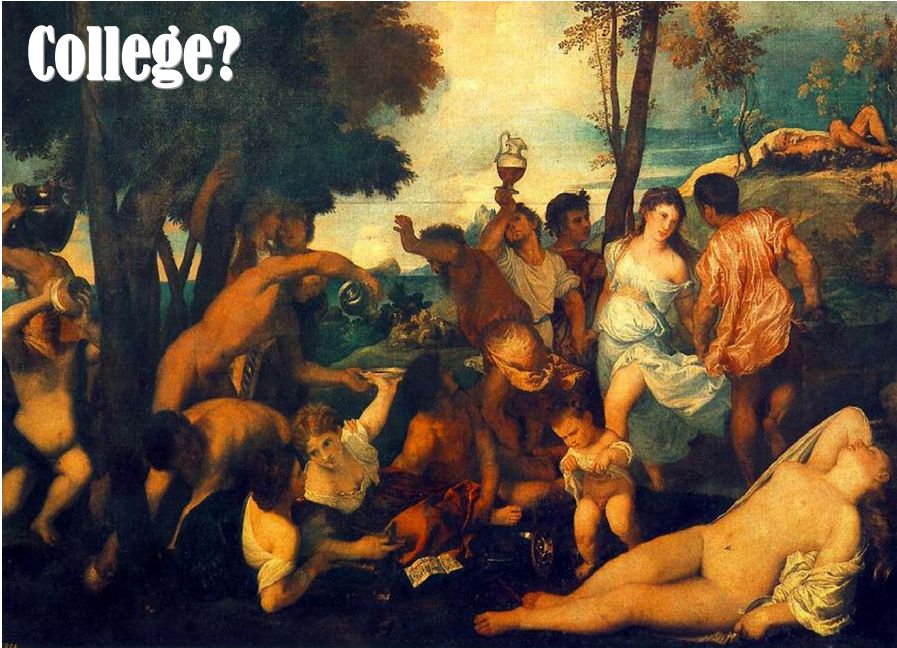Cross-posted at Montclair SocioBlog.
Is a university admissions office the same as the basketball team? Should selecting an entire student body for the college be like selecting players for the varsity?
Remember that kid at UC Merced, the one who argued that the graduated income tax was like redistributing GPA points? He found students who supported a graduated income tax and programs for the poor but who wouldn’t sign his petition to redistribute GPA points from the A students to those with lower GPAs. None of the students could articulate, on the spot, their reasons for not signing the GPA petition (assuming that he didn’t edit out any who did offer a reasonable explanation). (My earlier post on it is here.)
He’s baaaack. This time he’s asking students to sign a petition for affirmative action in sports – specifically to give preference to whites trying out for the team. Get it? If you support affirmative action in college admissions but not in sports, you’re a hypocrite. As before, students support one use of race preference but not the other, and as before none can give a convincing reason. The students all say, “It’s different,” but they can’t explain why.*
(To save time, I’ve set the video to start near the end – most students say the same thing. To see the whole thing, just drag the slider back to 0:00.)
Nyahh, nyahh – you’re for preferences for blacks where they’re a minority but not for whites where they are the minority. You’re a hypocrite.** Either that, or your thinking has been muddled by liberal ideas, which is pretty much the same thing, isn’t it?
The video concludes with the dictum that college admissions and sports should be the same. “Race-based preferences are wrong.” Ah, moral clarity.
Is college really the same as a sports team? They are certainly different in their consequences. If you’re a student now, in the coming years when you apply for a job, will HR ask you if you played varsity? Maybe. But unless the job you’re applying for is power forward, your answer won’t matter very much. But HR will absolutely want to know if you have a college degree. And your answer will matter. A lot.
Sports and school are different in another important way. Schools seek out minorities more for the sake of campus diversity than for the benefit of individuals. Yale probably gives preference to applicants from Montana or Mauritania over those form Manhattan. (Yale also might give preference to a power foward if the team this year is short of guys who can work the low post.) The purpose of this admissions policy is not to benefit Montanans (or power forwards) but to provide other students with the experience of living with a diversity of people (and to provide the basketball team with the right diversity of skills).
That same goal of demographic diversity does not apply to the competitive teams or the glee club or orchestra for that matter because those groups have a much more narrowly defined task. It’s that difference in purpose, rather than the difference in which race gets helped, that underlies the responses in the video. Take those same liberal students who support admissions policies that bring more blacks to campus; ask then if they would also support race-based preferences to get more blacks into crew, the glee club, or the chess team. I’m sure they would say no. As in the actual video, they would probably be unable to explain why giving preference to African Americans is acceptable in admissions but not activities.
They’ll say that the two are different, even though they can’t immediately explain why. Does that make them hypocrites, natural or un-?
The next time someone shoves a microphone in your face and asks for a justification for some distinction you make, smile at the camera and say, “As Michael Polany wrote in The Tacit Dimension, ‘we know more than we can tell,’ an insight that Richard Nisbett later developed with much social science evidence in his book Knowing More than We Can Tell.” See if you make it into the version that gets posted on YouTube, or into Robin Hanson’s blog.**
————————-
*I had assumed that the petitioner and his camera people were students at Merced. But in this new video, he’s at UCR.
** As with the previous video, Robin Hanson, on whose blog Overcoming Bias I found both of these, files the students’ attitudes in the folder marked “natural hypocrisy.”

















